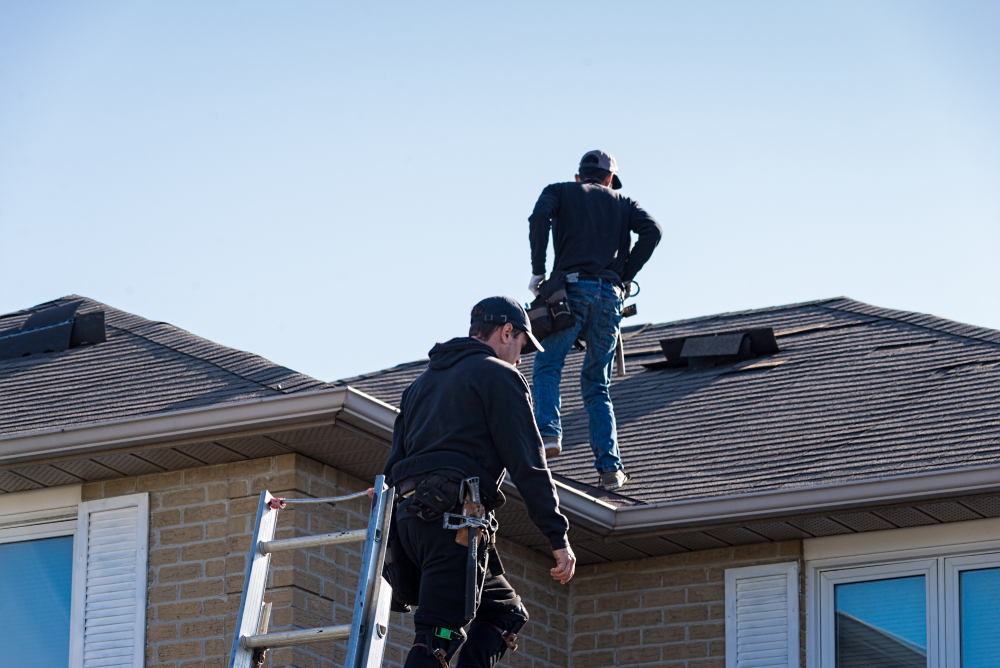With summer in full swing and the humidity rolling through it is common to experience storms. From tornadoes to hurricanes, and even hailstorms the summer can bring driving winds and rain. Storms can really put a toll on your roof and other exterior surfaces of your home. It is important to know what to do during and after a storm.
What To Do After A Storm
It is important to first know how to identify any damage to your roof after a major storm. Look through this guide to find out the different types of storm damage can happen to your roof and what to do next.
Types of Roof Storm Damage
Wind
Hurricane style winds which are classified as any wind that exceeds 74 MPH or even gale force winds (up to 54 MPH) can cause visible damage to your roof. The first aspect of your roof that may take damage from high winds is your shingles. If your shingles are damaged or even removed off your roof you are in trouble of having your waterproofing material exposed. If you experience not as sharp of wind your shingles may still be exposed to curling or even lifting. When shingles are installed they are overlapped to ensure a tight seal to keep out the elements. If any lifting or curling takes place that seal that once existed is now compromised.
Hail
When it comes to hail storms they are commonly short and do not last long. It is rare to see one last any longer than 15 minutes. If your roof goes through a hail storm it is in danger or experiencing dents. In some cases your shingles can be in danger or having their granules knocked loose. This can be detrimental to your roof as the granules help prevent sun and rain damage to your roof. Of course with the dents the hail may have caused it can hurt your homes curb appeal.
Standing Water
Roofs that do not offer proper drainage can experience damage and problems with standing water especially after big rain storms. If a roof has any uneven parts to it, it is very important to check regularly for any standing water. Your gutters will play a role in helping drain that water that falls on your roof. Clogged gutters can lead to water being trapped underneath your shingles. Which will ultimately lead to moisture to penetrate your underlayment.
Debris
This all depends on the severity of the storm. If a storm is bad enough to blow debris on to the top of your roof whether it is large branches or even tree limbs. They can dent or expose holes in your roof while damaging all shingles around the area. Leaving you with a costly repair and your shingles exposed to what is next to come. If it happens to be a couple of small lighter branches a quick clean up may be all you need.
Schedule a Roof Inspection
If you and your home have been through a storm recently it is important to inspect your home and yard afterwards. If there is no visible damage that you personally can see it is a good idea to contact a team of professionals to come check the stability of your roof and home. Some good areas to check after a storm are your gutters, attic, vents, windows, and your ceiling.
Hire a Professional Roofing Contractor
If there is visible damage or suspicion of damage call a dependable roofing contractor. Pro Exteriors is happy to help you through the process from estimate to completion. We have a team of experienced professionals that have been proudly serving our community since 1999! Whether your roof needs a full reinstalment or just a repair we have you covered! Get started today by calling us at 302.664.1700 or by filling out one of our contact forms. We look forward to hearing from you!


